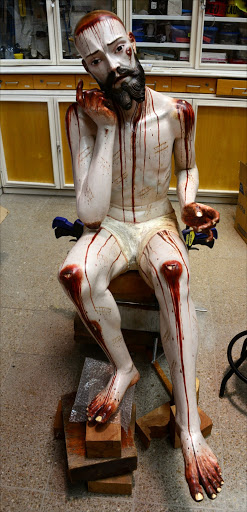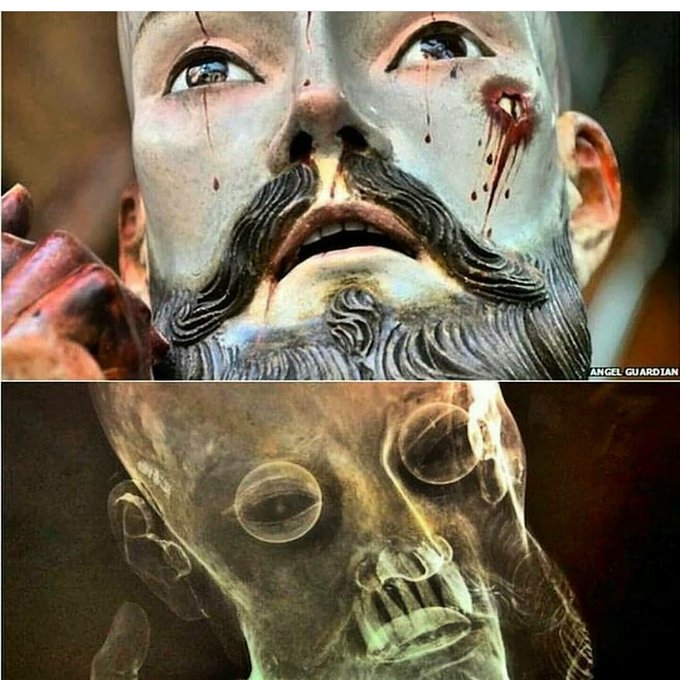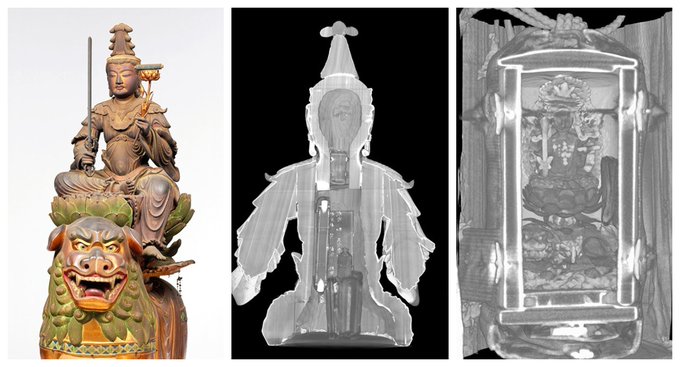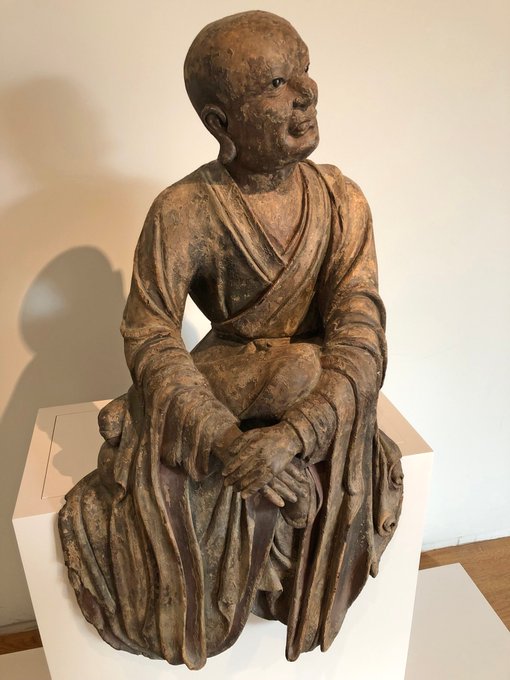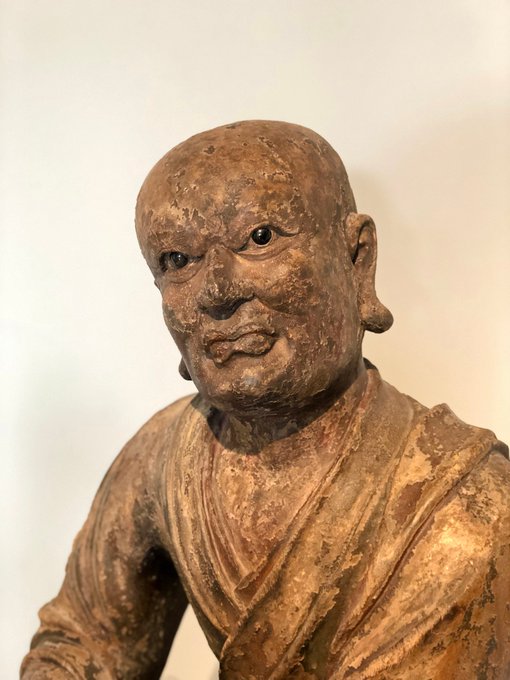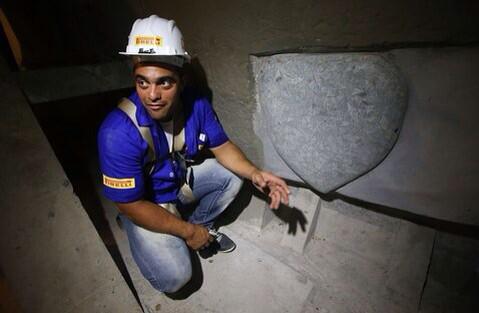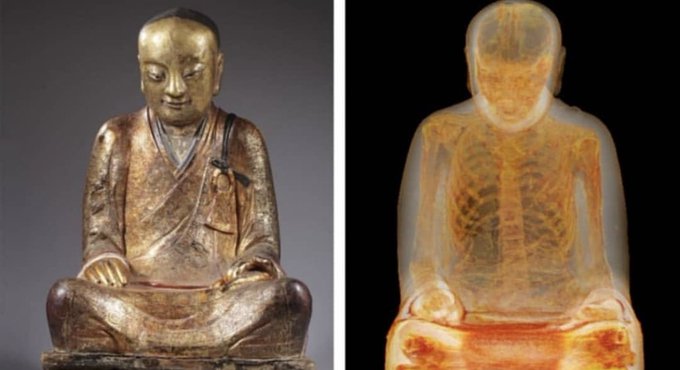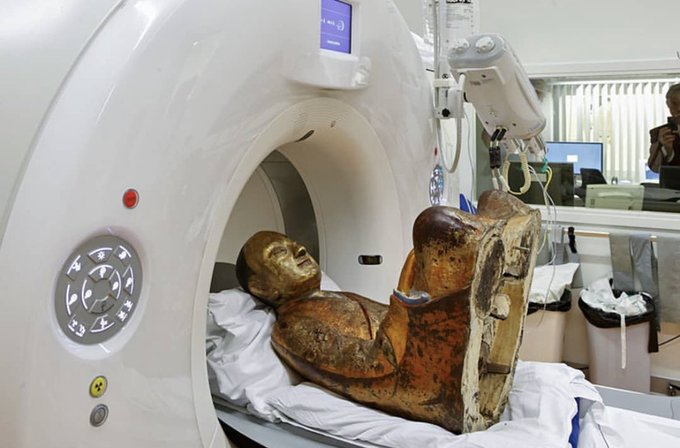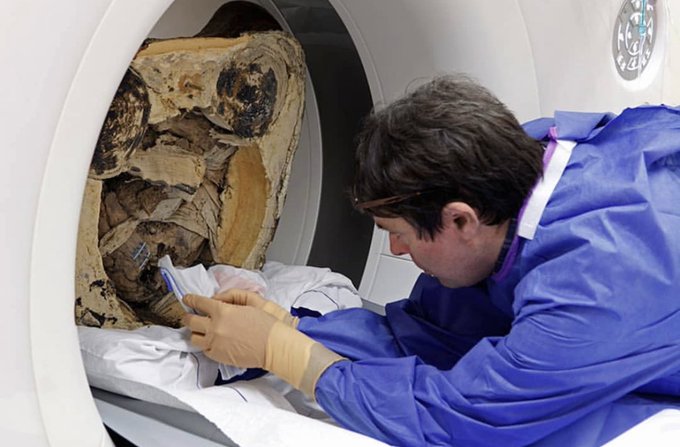Strange Things Found In Statues

April 12, 2025
•19 min read
Let's explore the strangest things found inside statues!
There are some statues out there that harbor some hidden curiosities inside them. From a creepy corpse encased in a Buddha to the discovery of a mysterious note hidden inside read end of ancient Jesus statue, let's uncover the strangest things found in statues!
Nefertiti Bust
If you head to Berlin’s Neues Museum, you’ll find the world renowned Nefertiti Bust. The work, believed to have been crafted in 1340 BCE by the sculptor, Thutmose, depicts the face of Nefertiti, the Great Royal wife of the Egyptian pharaoh, Akhenaten. The bust is visited by some 500,000 sightseers every year. Yet, few of those who marvel at her majesty know what’s underneath that statue’s surface.
Back in 2009, researchers performing a CT scan uncovered a wrinkled face of Nefertiti carved in the inner core of the bust. The inner face exhibited creases around the mouth and cheek, less prominent cheekbones, and a slight bump on the nose. But Thutmose thought it’d be best to reflect his queen in the most attractive way, covering the limestone core in layers of stucco, before sculpting over it with the glamorous bust we all know now.Aside from that, some people out there believe that bust’s ludicrously long head points to more hidden secrets. Online conspiracy theorists have speculated that Nefertiti’s elongated skull shape links her to some sort of race of ancient aliens. In fairness, a skull that shape does sound other-worldly.However, the most likely explanation is that Nefertiti underwent artificial cranium deformation, or ACD. The procedure, which is typically carried out on an infant, when the skull is most compliant, is achieved by applying pressure upwards. Strange as it seems, ACD was common amongst the ancient Egyptian nobility, who used it as a mark of their heightened social status, visually differentiating themselves from the lower classes.
Sphinx’s Secrets
But Nefertiti’s bust isn’t the only piece of Egyptian architecture that harbors a secret or two. Located on the Giza plateau, just a stone’s throw away from the Great Pyramids, is the Great Sphinx of Giza. That colossal, 66 foot high and 240 foot long limestone statue of the sphinx, a mythical creature with the head of a human, body of a lion, and wings of an eagle, is believed to have been built around 2,500 BCE. That makes this statue over 4,500 years old!
Considering it’s been around for so long, it’s no surprise rumors have sprung up on what could be beneath the sphinx’s limestone exterior. Maybe there’s an ancient sphinx skeleton resting inside? Egyptologist, Manu Seyfzadeh, decided to find out for himself, using a non-evasive technique known as seismic tomography to dig deeper.Lord Of Patience Statue With Human Teeth
But Egypt isn’t the only country containing statues with some strange secrets. Back in 2014, restoration workers in Mexico were working on a spooky statue, known as the Lord of Patience. It’s fair to say having to get up close and personal with that ominous 18th century object would be scary enough. However, the restoration workers soon discovered something even more harrowing inside the statue. As part of the refurbishment, researchers took an X-ray of the Lord of Patience found teeth inside!
For Easter: the ‘Lord of Patience’ Jesus statue in the parish of San Bartolo Cuautlalpan, Mexico. During resoration of the 18th Century artwork an X-Ray was taken and it revealed that the teeth of the statue were, in fact, human. More on my Insta: instagram.com/p/CNNfKTMDetD/…
Note Found Hidden Inside Rear End Of Jesus Statue
Funnily enough, the Lord of Patience isn’t the only statue of Jesus that holds something strange inside. Restorers to the Cristo del Miserere, an 18th century statue of Jesus, found in Sotillo de la Ribera, Spain, were carrying out work to the object when they noticed something odd. While flipping the Jesus over, they uncovered an old piece of cloth. Hiding beneath the material was a small opening in the most ungodly place, the backside of the statue.
CT Scan Reveals Statue Inside Buddhist Statue
Around 7,500 miles away from Sotillo de la Ribera, you’ll find the Hokke-ji Temple in southern Japan. Built in 745 by Empress Kōmyō, that Buddhist Temple houses various icons, including a statuette portraying Monju Bosatsu, someone devoted to becoming a Buddhist. That dainty statue, which dates back to the 14th century, is just 2.5 feet high.
CT scans have revealed a miniature Monju-bosatsu statue hidden inside the neck of a 14th century one housed in Kyoto's Daichiji temple asahi.com/ajw/articles/1…
Great Ming Treasure Banknote
Back in 2016, art experts in Australia were readying a spooky sculpture for auction. However, while inspecting the underside of the 14th century wooden Buddhist bust representing the head of a Luohan, a wise person who has reached Nirvana, they discovered a small cavity. As they investigated further, they found a crumpled up piece of paper.
13th century painted and lacquered wood statue of a lohan, a hermit follower of Buddha who lives in the mountains striving towards spiritual perfection. The statue retains its glass eyes, giving it an uncanny realism. From China @rijksmuseum #sculpture
Apennine Colossus Secret Chamber
Just a few miles outside of Florence is the stunning Pratolino Medici Park. Whether it’s the rolling green hills, or its picturesque lake, that natural wonder is sure to take any visitor’s breath away. Yet, the stand out feature of that park is not the natural scenery. It’s the thing in the image below!
Crouching by the shore of the villa’s lake, the Apennine Colossus stands at an incredible thirty-six feet high. Jean de Boulogne created the sculpture, intended to be a personification of the nearby Apennine Mountains in the late 16th century. But the genius of de Boulogne’s work doesn’t end there.The thing is he didn’t just build any old statue. If you take a look around the back you’ll notice a cavernous entrance! Inside the Apennine Colossus are a network of passageways leading to grottos, fountains, and even a chamber that’s located within the colossus’ head!If that wasn’t cool enough, there’s also a fireplace in the chamber, which, when lit, releases smoke through the colossus’ nose. On top of that, at nighttime the chamber is illuminated with torches, making it seem from the outside that the statue’s eyes are glowing in the dark! Can you imagine taking an innocent stroll through the Pratolino Medici Park at night, when all of a sudden, you’re confronted by a 36 foot tall statue, with glowing eyes and smoke coming out of its nose?Rabbit In Nelson Mandela's Ear
In 2013, a 30 foot tall bronze statue of Nelson Mandela was erected in Pretoria, South Africa, to commemorate the apartheid activist after his death. It’s fair to say sculptors, Andre Prinsloo and Ruhan Janse van Vuuren did a pretty good job in producing a high-quality lifelike statue. Despite their extraordinary effort, the South African government refused the artists’ request to engrave their signatures on the statue’s trousers.
So instead, Prinsloo and van Vuuren came up with a brilliant back-up plan. Around a month after the statue was erected, a tourist noticed something odd about Mr. Mandela. They saw something poking out of the statue’s right ear. A closer look revealed that there was a small bronze bunny, around half the size of the ear canal, tucked inside.South Africa ordered sculptors to remove bronze rabbit hidden in ear of Nelson Mandela statue bbc.in/1jngzkx
Confederate Capsule
Back in 2021, a statue commemorating the former American Confederate general, Robert E Lee, was taken down in Richmond, Virginia. As the statue was uplifted by a crane, workers noticed something odd in its pedestal. It was a rusty, old 36 pound copper container. But that wasn’t just some container. It was a time capsule, deposited in the statue at the time of its construction in 1887. And as it happened, that was a much-anticipated find.
Statue Of Liberty Secrets
But that’s not the only American statue to contain a secret or two. The world’s most famous statue, the Statue of Liberty is a superstructure, visited by almost 5 million sightseers every year. But for all the attention lady Liberty gets, very few people know what she’s hiding.
Before its assembly, specially chosen items were put into a time capsule and placed under where the Statue of Liberty stands. The memorabilia included: a copy of the U.S constitution, 20 bronze medals of U.S presidents, and a portrait of Frédéric Auguste Bartholdi the sculptor responsible for the statue! No-one’s accessed the time capsule since, and it’s believed that it’ll only be accessible when Lady Liberty is torn down.Although now that I think about it, the raised foot of Libby does look suspiciously like a hidden door! Who knows? Maybe the route to that time capsule was hiding in plain sight the whole time? At a loftier height, you’ll find the statue’s torch, constructed as a symbol of enlightenment. Well, let me quickly enlighten you on what was once found within that big beacon.Back in the day, the Statue of Liberty’s torch wasn’t just for show, it also acted as a balcony. Up to 12 people at a time could climb 300 feet up and enjoy the view from the torch’s terrace. But I wouldn’t get your hopes up about experiencing that for yourself.Back in July 1916, German agents stuffed barges moored along the wharf by Liberty Island with explosives. Their aim was to destroy a nearby munitions depot filled with supplies, soon to be shipped to the Allies for use in World War One. And well, they succeeded. Shortly after 2:00am, a massive blast obliterated the depot, damaging the Statue of Liberty and her torch in the process. The destruction was so bad, a decision was made to close visitor access to the beacon for good.The Hidden Heart Of Christ The Redeemer
Speaking of world famous statues, that brings us to Rio de Janeiro’s, Christ the Redeemer. As one of the New 7 Wonders of the World, it’s no surprise that 125 foot tall statue of Jesus Christ attracts 2 million visitors per year.
Did you know that Christ the Redeemer in Rio has a stone tile mosaic heart inside of his chest?
Mount Rushmore's Secret Chamber
Rounding up our quick-stop tour of globally recognized monuments is the landmark Mount Rushmore. Each year, over 2 million tourists hike to the Black Hills to get a glimpse of one of the United States’ greatest monuments. Famous as the 60 foot tall busts of Washington, Jefferson, Roosevelt and Lincoln are, but behind the head of Lincoln, you’ll find a mysterious doorway that’s been carved into the mountain.
Gutzon Borglum, the sculptor behind Mount Rushmore, planned to create a large room within the mountain. The chamber, known as the Hall of Records, was proposed to be 80 by 100 feet. Inside Borglum wanted bronze and glass cabinets containing important American documents like the Declaration of Independence, as well as busts of famous Americans, and a list of U.S contributions to the world in science, industry and arts.Construction on the hidden hall took place between July 1938 and July 1939, after a 70 foot tunnel was blasted into the mountain. Sadly though, Borglum died in 1941, and with it so did his grand dreams. The unfinished hall sat empty and untouched for decades. That was until 1998, when a repository was constructed inside the empty cavern, containing a copy of the Bill of Rights, the U.S Constitution and the Declaration of Independence.World's Largest Gold Buddha
Back in 1955 in Bangkok, Thailand, a Buddha statue was being moved to a new nearby temple. That was no easy feat the statue was around 10 feet tall, and extremely heavy to lift. And, that was back in the 50s, so the move relied solely on manpower.

Mummified Monk Hidden In Buddha Statue
Mind-blowing as that glowing, golden find is, it’s still not the craziest thing found within a Buddha statue. Instead that honor goes to a 1,000 year old bronze figure. The statue, believed to originate from Yangchun in southern China, ended up at the Drent Museum in Holland by the 21st century.
CT scan of 1,000-year-old Buddha statue reveals the remains of a mummified monk. The discovery was made when the statue was sent in for repairs. The body inside the statue is thought to be that of Buddhist master Liuquan, a prominent member of the Chinese Meditation School who

Missing Man Found Dead Inside Dinosaur Statue
On the topic of encased corpses, that brings us onto our next statue. A strange papier-mâché stegosaurus sculpture was put up in Santa Coloma de Gramanet, on the outskirts of Barcelona, with the aim of generating publicity for an old cinema.
Missing man found dead inside Spanish dinosaur statue theguardian.com/world/2021/may…




